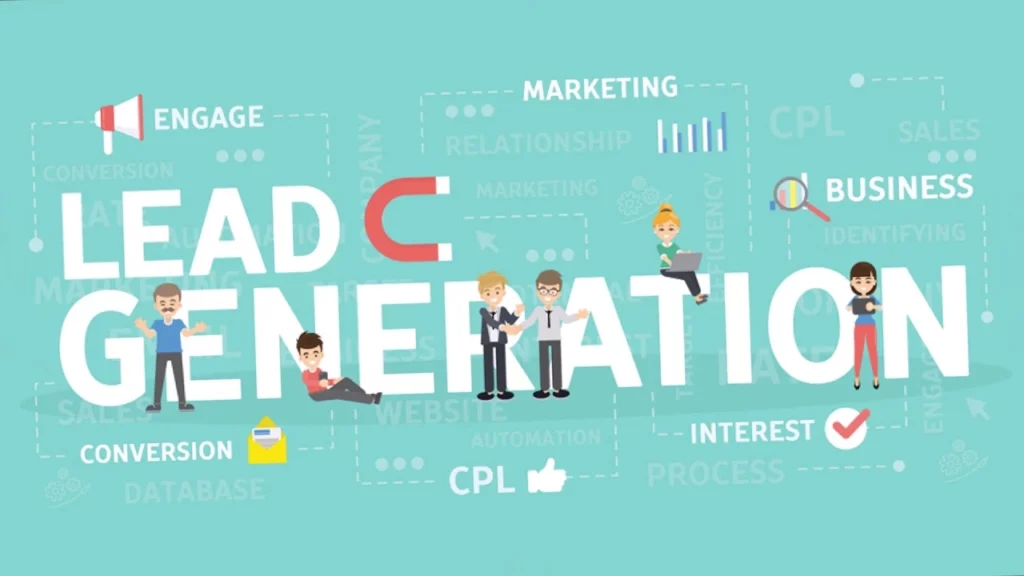Generating high-quality leads is the backbone of a successful real estate business. With increasing competition and evolving buyer behavior, real estate marketers need to adopt effective strategies to attract, nurture, and convert leads into loyal customers. This guide walks you through a step-by-step process to create a high-impact lead generation strategy that delivers results.
Step 1: Define Your Target Audience
Before launching any lead generation campaign, understanding your target audience is crucial. Identify who your ideal buyers are based on factors such as:
- Demographics: Age, income level, profession, and family size.
- Geographics: Preferred locations, neighborhoods, and city areas.
- Behavioral Insights: Online search patterns, property preferences, and past interactions.
A clear buyer persona will help tailor your marketing efforts to attract the right leads.
Step 2: Optimize Your Website For Lead Capture
Your website is your digital storefront. To convert visitors into leads, ensure it is:
- Mobile-Friendly: A majority of homebuyers search properties on mobile devices.
- Fast-Loading: Slow websites lead to high bounce rates.
- SEO-Optimized: Use relevant keywords to rank higher in search results.
- Lead Capture Ready: Include easy-to-fill contact forms, chatbots, and compelling calls to action.
An optimized website acts as a 24/7 lead generation machine.
Step 3: Leverage High-Value Content Marketing
Providing valuable content builds trust and positions you as an industry expert. Some powerful content strategies include:
- Blog Articles: Topics such as home-buying guides, investment tips, and market trends.
- Ebooks & Reports: Offer downloadable guides in exchange for contact details.
- Videos & Virtual Tours: Showcase properties through engaging visual content.
- Case Studies & Testimonials: Highlight successful transactions to build credibility.
High-quality content not only attracts visitors but also nurtures them through the buying journey.
Step 4: Utilize Social Media For Lead Engagement
Social media platforms are goldmines for real estate leads. Implement these strategies:
- Run Targeted Ads: Facebook and Instagram ads allow precise audience targeting.
- Engage with Followers: Respond to comments, DMs, and inquiries promptly.
- Share Valuable Content: Post market updates, property listings, and success stories.
- Leverage Facebook Groups & LinkedIn: Join local real estate communities to network and generate leads.
A consistent and engaging social media presence increases brand awareness and lead conversions.
Step 5: Implement Email Marketing Campaigns
Email marketing remains one of the most effective ways to nurture leads. Create targeted email campaigns based on:
- Lead Segmentation: Categorize leads by interest, budget, and readiness to buy.
- Personalized Follow-Ups: Send tailored property recommendations.
- Market Updates & Newsletters: Keep potential buyers informed about real estate trends.
- Exclusive Offers: Provide early access to new listings or special discounts.
Regular and relevant email communication keeps your brand top of mind.
Step 6: Use Paid Advertising For Instant Lead Flow
While organic strategies take time, paid ads generate immediate results. Key advertising methods include:
- Google Ads: Run search ads targeting buyers looking for properties in specific locations.
- Facebook & Instagram Ads: Use carousel ads, video ads, and lead generation forms.
- YouTube Ads: Promote property walkthroughs and market insights.
A well-structured paid ad campaign delivers qualified leads quickly.
Step 7: Implement Crm & Automation Tools
Customer Relationship Management (CRM) and automation tools streamline lead tracking and follow-ups. Benefits include:
- Lead Scoring: Rank leads based on engagement and conversion potential.
- Automated Follow-Ups: Schedule email sequences and reminders.
- Data Analysis: Track campaign performance to optimize strategies.
Using CRM tools ensures no lead falls through the cracks, improving conversion rates.
Step 8: Leverage Referral & Partner Networks
Word-of-mouth referrals are powerful in real estate. Encourage satisfied clients to refer new leads by:
- Offering Incentives: Provide discounts or perks for successful referrals.
- Partnering with Local Businesses: Collaborate with mortgage brokers, interior designers, and relocation services.
- Building Community Relationships: Engage with local events and real estate expos.
A strong referral network generates high-quality leads with minimal marketing costs.
Step 9: Monitor, Analyze & Optimize
Continuously track your lead generation efforts to measure success. Key performance indicators (KPIs) include:
- Lead Conversion Rate: Percentage of leads turning into clients.
- Cost Per Lead (CPL): Assess the cost-effectiveness of your campaigns.
- Website Traffic & Engagement: Analyze visitor behavior and lead interactions.
- Ad Performance Metrics: Optimize ads based on CTRs and ROI.
Regular data analysis helps refine strategies for better results.
Conclusion
High-impact real estate lead generation requires a mix of organic and paid strategies, personalized marketing, and smart automation. By following this step-by-step approach, real estate marketers can attract, engage, and convert more leads effectively. The key is consistency—keep optimizing and evolving your strategy to stay ahead in a competitive market.


